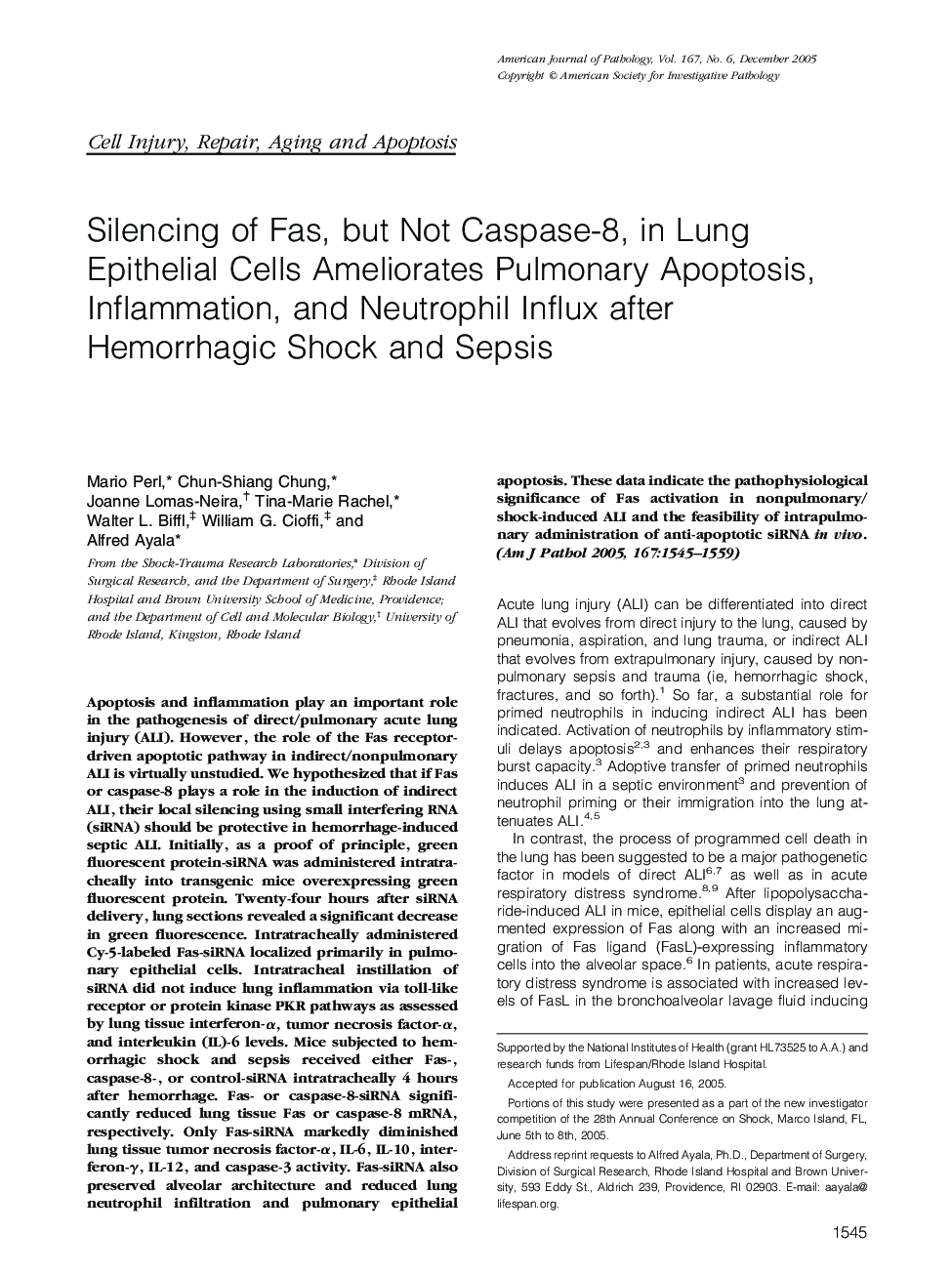| Article ID | Journal | Published Year | Pages | File Type |
|---|---|---|---|---|
| 9943182 | The American Journal of Pathology | 2005 | 15 Pages |
Abstract
Apoptosis and inflammation play an important role in the pathogenesis of direct/pulmonary acute lung injury (ALI). However, the role of the Fas receptor-driven apoptotic pathway in indirect/nonpulmonary ALI is virtually unstudied. We hypothesized that if Fas or caspase-8 plays a role in the induction of indirect ALI, their local silencing using small interfering RNA (siRNA) should be protective in hemorrhage-induced septic ALI. Initially, as a proof of principle, green fluorescent protein-siRNA was administered intratracheally into transgenic mice overexpressing green fluorescent protein. Twenty-four hours after siRNA delivery, lung sections revealed a significant decrease in green fluorescence. Intratracheally administered Cy-5-labeled Fas-siRNA localized primarily in pulmonary epithelial cells. Intratracheal instillation of siRNA did not induce lung inflammation via toll-like receptor or protein kinase PKR pathways as assessed by lung tissue interferon-α, tumor necrosis factor-α, and interleukin (IL)-6 levels. Mice subjected to hemorrhagic shock and sepsis received either Fas-, caspase-8-, or control-siRNA intratracheally 4 hours after hemorrhage. Fas- or caspase-8-siRNA significantly reduced lung tissue Fas or caspase-8 mRNA, respectively. Only Fas-siRNA markedly diminished lung tissue tumor necrosis factor-α, IL-6, IL-10, interferon-γ, IL-12, and caspase-3 activity. Fas-siRNA also preserved alveolar architecture and reduced lung neutrophil infiltration and pulmonary epithelial apoptosis. These data indicate the pathophysiological significance of Fas activation in nonpulmonary/shock-induced ALI and the feasibility of intrapulmonary administration of anti-apoptotic siRNA in vivo.
Related Topics
Health Sciences
Medicine and Dentistry
Cardiology and Cardiovascular Medicine
Authors
Mario Perl, Chun-Shiang Chung, Joanne Lomas-Neira, Tina-Marie Rachel, Walter L. Biffl, William G. Cioffi, Alfred Ayala,
